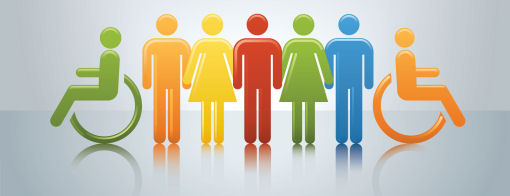Mainstreaming Report and Equality Outcomes
West Dunbartonshire Equality Plan 2025-2029
Before the launch of our last plan in 2021, the COVID-19 pandemic brought into sharper focus pre-existing and persistent inequalities especially for younger people, Black minority ethnic people, severely disabled people, and women. Since then, the cost of living and housing crisis, alongside reduction in resources available to the Council and rest of the public sector, have exacerbated these inequalities.
This means advancing and protecting equality and human rights is more important than ever. Reflecting on this, our new plan has an emphasis on using the resources and information we have as efficiently and effectively as possible to help us deliver services and be inclusive employer.
We have identified the Equality Outcomes and Mainstreaming Areas using input and feedback from consultation and information gathering undertaken over the last two years. This has come from a wide range of sources and groups, as well as a review of our own progress.
The focus we have adopted for 2025-2029 on increased participation for less heard groups, better use of the information and feedback from our communities, on accessible and transparent information, and increased digital inclusion will help tackle important inequalities.
We will continue to work with Community Planning partners, making sure that we contribute a strong equalities and human rights perspective to add value to joint working on key issues such as reducing child poverty, and tackling other issues driven by inequality.
The report contains our Equal Pay Statement, and employment diversity information can be found on the Employment Equalities Monitoring page.
The Council is committed to fulfilling the three key elements of the general equality duty as defined in the Equality Act 2010:
- Eliminating discrimination, harassment and victimisation
- Advancing equality of opportunity between people who share a protected characteristic and those who do not
- Fostering good relations between people who share a protected characteristic and those who do not. This includes challenging prejudice and building understanding.
Protected characteristics:
- age
- disability
- gender reassignment,
- pregnancy and maternity
- race, this includes ethnicity, colour and national origin
- religion or belief
- sex
- sexual orientation
- marriage/civil partnership (for which only the first duty is applies)
Everyone has 'protected characteristics', but it is the treatment individuals and groups receive, the level of autonomy they have, and the positive or negative outcomes for them, that are its focus. Therefore the Council will:
- Remove or minimise disadvantages experienced by people due to their protected characteristics
- Meet the needs of people from protected groups where these are different from the needs of other people
- Encourage people with protected characteristics to participate in public life or in other activities where their participation is disproportionately low.
While it is a legal requirement, these steps contribute to fairer, more efficient and more effective services. Therefore the Council will:
- take effective action on equality
- make the right decisions, first time around
- develop better policies and practices, based on evidence
- be transparent, accessible and accountable
- deliver improved outcomes for all.
2021-2023 update
Employment data for the latest available years is on the Employment Equalities Monitoring page
